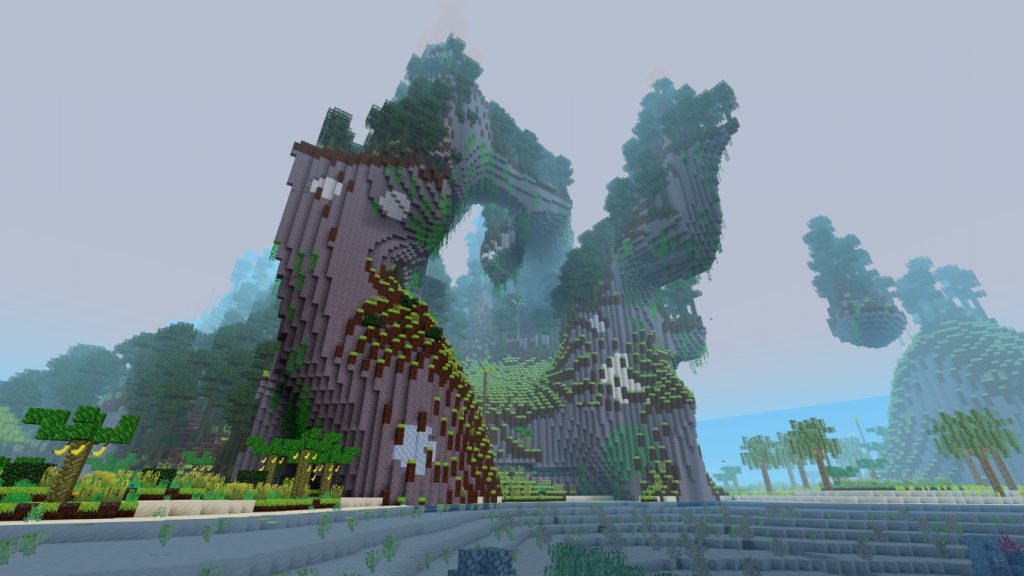
How My Family Migrated to Minetest
Article by Bernd Ritter
Minecraft’s extremely successful story reaches back to 2010. Thanks to Java’s onboard cross platform support, a Linux version was a no-brainer and supported from the start. The Java platform is highly optimized on Linux to empower serious heavy workloads – an area where Linux servers tend to shine very easily. This made the Linux version of Minecraft very popular.
When Microsoft bought Mojang (and with that, Minecraft) in 2014, the Linux community was uncertain on Microsoft’s intentions and the future of the Linux port. The popularity was no match to the sheer numbers of players, which only a certain percentage played natively on Linux. Also Microsoft was not yet known for their now “Microsoft Loves Linux” initiative back then. Additionally, they favored the newer incompatible and Linux unsupported Bedrock engine to extend to consoles and in-game sales.
Despite all fears, nothing happened to the Java version of Minecraft. Microsoft supported new features in Java as well and always kept the Linux build working.
So far, so good – but there’s always something looming on the horizon.
As many of you might know, Minecraft requires online login to play, even for local network games. These accounts relied on a Mojang account, created directly with Mojang since the game was released as Alpha. Now in 2021 Microsoft finally announced that all Mojang accounts have to migrate to Microsoft accounts. If users did not migrate before the end of 2023, the Mojang account would be closed down.
Many ignored this announcement. Many migrated as they were told. Some tried to migrate. Tried as in: they wanted to migrate, but somehow the process got stuck and people were stranded with disabled Mojang accounts and not working Microsoft accounts for their Minecraft game. Sometimes Microsoft support could help, sometimes not. Most of the time it worked.
Sadly my two kids (a daughter at 14 now and a son at 11) were one of the unfortunates, whose accounts could not be transferred and were stuck. They were devastated and I was on the verge of buying two completely new copies of Minecraft on new Microsoft accounts for them. But I had an idea first that I wanted to give a try.
As both of them were playing Minecraft on their Linux boxes (openSUSE Leap) they knew a bit about open and free software. I asked them to have a look into a game that can be customized a lot and was similar to Minecraft. I’ve shown them Minetest, an open source rewrite of the base Minecraft engine, and extended by a powerful mod infrastructure.
They were skeptical at first, but I insisted on giving it a try, despite the game looking a bit different to their beloved Minecraft. Back in Minecraft days they wanted to try out install mods on Minecraft to extend the game. I’ve shown them that this is what Minetest is all about! It is a strong base game and you can extend the game with anything you like. Want monsters? Add them! Want horses to tend to? Add them!
We used a rainy fall afternoon to look through various mods on ContentDB, searched through modpacks and had a lot of fun trying out everything on our home Minetest server. At one point they realized that they don’t need an online account like they did with Minecraft. Finally my daughter could invite her friend to play with her on our home server. That was not possible before because her friend used the tablet version of Minecraft, which was based on Bedrock. Now this would work and even better: her friend could just download the game free of charge! No accounts, no ads, no expensive Realm servers – no arbitrary boundaries any longer!
The final shift towards Minetest happened. We found the Minetest game Mineclone2, which happens to be a clean room implementation of Minecraft behaviors through various mods combined and some custom development.
They are happy now to play their block building game without account outages or required internet availability. Any of their friends can now join the game without having to buy the exact same variant of the game and going through the hassle of creating an account with Microsoft.
Is there any better way to show the younger generation WHY open source and free software is important and WHAT free software and open source has to offer?
